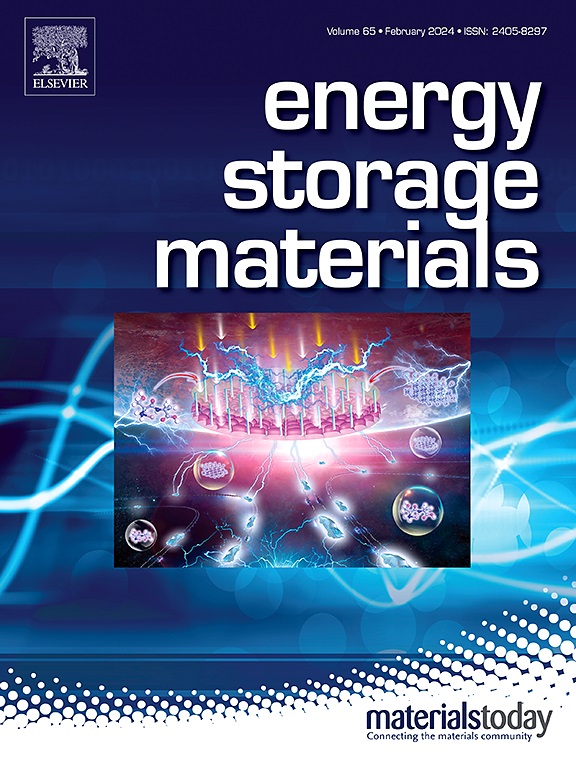Unveiling the degradation mechanisms and addressing sensitivity challenges in nickel-rich cathodes via advanced characterization
IF 20.2
1区 材料科学
Q1 CHEMISTRY, PHYSICAL
引用次数: 0
Abstract
Nickel-rich layered oxide cathodes are pivotal for next-generation lithium-ion batteries due to their high capacity and energy density. However, their inherent sensitivity to environmental perturbations (e.g., air, electron beams) and dynamic structural degradation during the cycling process, such as Li/Ni cation disorder, microcrack propagation, and surface parasitic reactions, pose significant challenges for characterizing their authentic structural states. Conventional characterization techniques often introduce artifacts or fail to capture real-time degradation mechanisms under operating conditions. In this review, we systematically analyze the limitations of traditional characterizations and highlight the necessity of advanced non-destructive (e.g., cryo-electron microscopy), high-resolution (e.g., scanning diffraction X-ray microscopy), and in situ/operando techniques (e.g., operando neutron powder diffraction, in situ X-ray absorption fine structure spectroscopy) to address these challenges. Furthermore, we investigate the synergistic integration of machine learning, multimodal characterization techniques, and theoretical calculation to elucidate complex degradation mechanisms and expedite the rational design of stable Ni-rich cathode materials.
通过高级表征揭示富镍阴极的降解机制和解决灵敏度挑战
由于其高容量和能量密度,富镍层状氧化物阴极对下一代锂离子电池至关重要。然而,它们对环境扰动(如空气、电子束)的固有敏感性和循环过程中的动态结构降解(如Li/Ni阳离子无序、微裂纹扩展和表面寄生反应)对表征其真实结构状态构成了重大挑战。传统的表征技术通常会引入伪影或无法捕获操作条件下的实时降解机制。在这篇综述中,我们系统地分析了传统表征方法的局限性,并强调了先进的非破坏性(如低温电子显微镜)、高分辨率(如扫描衍射x射线显微镜)和原位/operando技术(如operando中子粉末衍射、原位x射线吸收精细结构光谱)来应对这些挑战的必要性。此外,我们研究了机器学习、多模态表征技术和理论计算的协同集成,以阐明复杂的降解机制,加快稳定富镍阴极材料的合理设计。
本文章由计算机程序翻译,如有差异,请以英文原文为准。
求助全文
约1分钟内获得全文
求助全文
来源期刊

Energy Storage Materials
Materials Science-General Materials Science
CiteScore
33.00
自引率
5.90%
发文量
652
审稿时长
27 days
期刊介绍:
Energy Storage Materials is a global interdisciplinary journal dedicated to sharing scientific and technological advancements in materials and devices for advanced energy storage and related energy conversion, such as in metal-O2 batteries. The journal features comprehensive research articles, including full papers and short communications, as well as authoritative feature articles and reviews by leading experts in the field.
Energy Storage Materials covers a wide range of topics, including the synthesis, fabrication, structure, properties, performance, and technological applications of energy storage materials. Additionally, the journal explores strategies, policies, and developments in the field of energy storage materials and devices for sustainable energy.
Published papers are selected based on their scientific and technological significance, their ability to provide valuable new knowledge, and their relevance to the international research community.
 求助内容:
求助内容: 应助结果提醒方式:
应助结果提醒方式:


